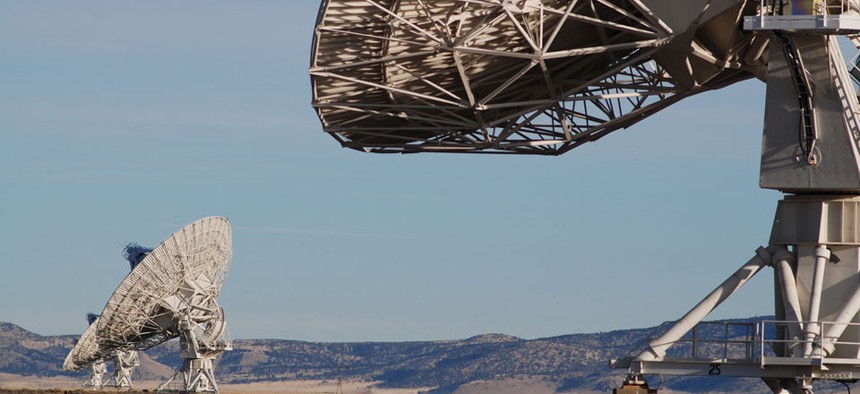No Alien Contact: Shutdown Shutters Very Large Array Radio Telescope

Flickr user gord99
Iconic VLA peers back in time to the origins of universe.
If Jodie Foster wanted to pick up signals from a distant civilization today using the Very Large Array in New Mexico, she’d have to wait. The radio observatory, along with another in West Virginia, closed Oct. 4 due to a lack of funds and the government shutdown.
The producers of 1997 movie “Contact” used the iconic VLA, which consists of 27 radio telescope dishes arrayed on a Y axis where each leg measures 13 miles, to dramatize the search for extraterrestrial intelligence by Dr. Eleanor "Ellie" Arroway (played by Foster).
The premise of the movie is based on a key fact of radio telescopes -- they peer back in time. Mark Adams, communications head of the National Radio Astronomy Observatory in Charlottesville, Va., which operates the VLA, said the telescopes pick up signals emitted by galaxies millions and billions of years ago. The Charlottesville observatory also operates the world’s largest steerable single dish radio telescope, the Robert C. Byrd Green Bank Telescope, in Green Bank, W.Va.
Ethan Schreier, president of Associated Universities Inc. in Washington, which manages the National Radio Astronomy Observatory for the National Science Foundation, said the VLA stands out as the premier interferometer -- a multi-dish telescope -- in the world.
The Karl G. Jansky Very Large Array, located on the remote Plains of San Agustin, underwent a major upgrade in 2012. Engineers installed a new supercomputer to process signals and high-speed fiber optic connections to transmit signals from each dish to the supercomputer at a cost of “a bit under $100 million,” Schreier said.
Radio telescopes collect naturally emitted radio waves from celestial objects, running them through a computer processor and then using the specific radio frequencies emitted by each object to produce an image. The upgraded VLA is able to process signals across a far wider spectrum than the original, Adams said.
In April, National Radio Astronomy Observatory scientist Jim Condon said VLA allowed astronomers for the first time to identify discrete sources that account for nearly all the radio waves coming from distant galaxies. The astronomers discovered that about 63 percent of background radio emission comes from galaxies with gorging black holes at their cores; the remaining 37 percent comes from galaxies that are rapidly forming stars.
“The sensitivity and resolution of the VLA, following its decade-long upgrade, made it possible to identify the specific objects responsible for nearly all of the radio background emission coming from beyond our own Milky Way Galaxy," Condon said.
Lack of funding means NRAO has to shut down its telescopes, furlough its staff and stop observations into the universe, Schreier said.
(Image via Flickr user gord99)






